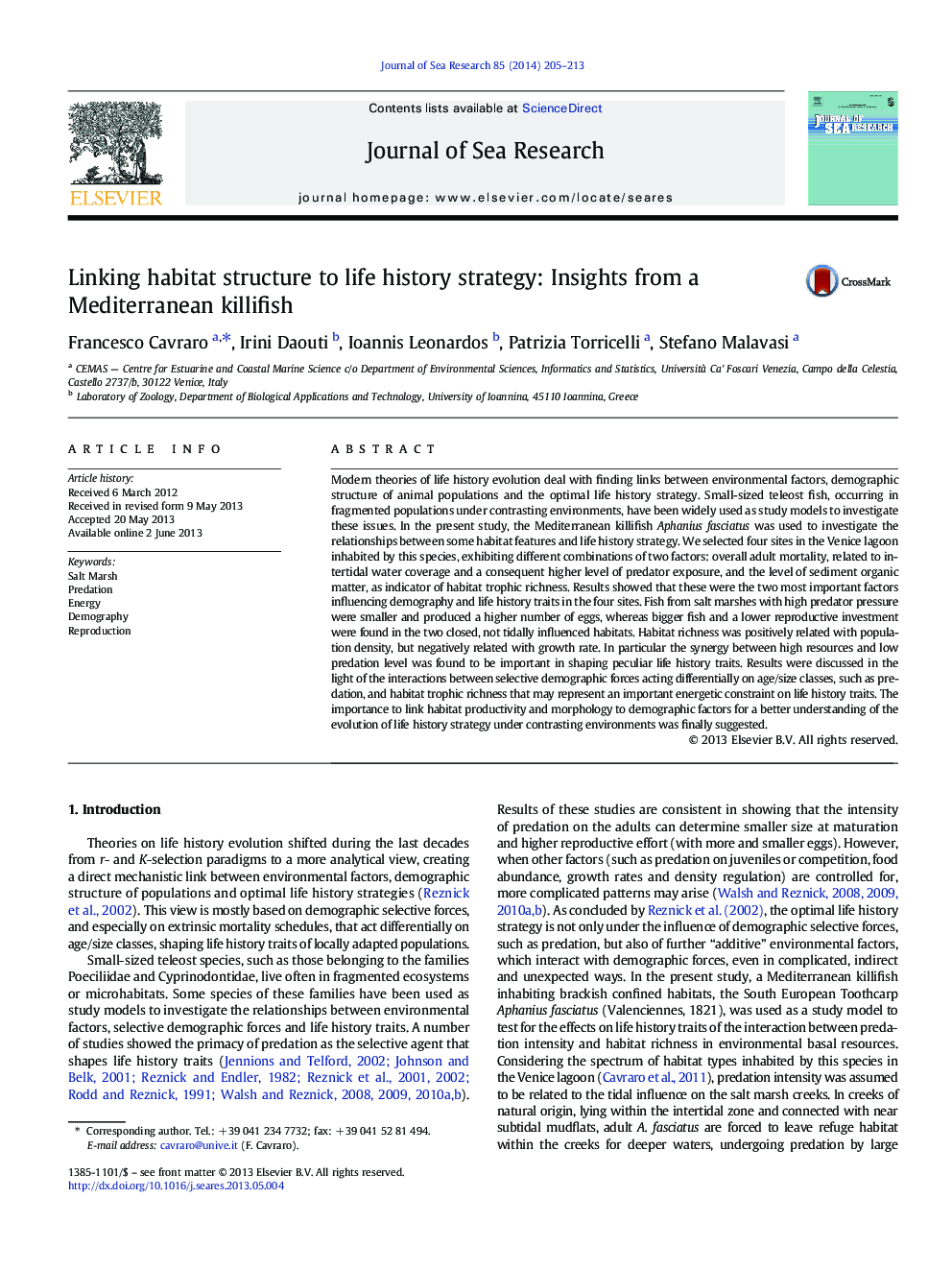| کد مقاله | کد نشریه | سال انتشار | مقاله انگلیسی | نسخه تمام متن |
|---|---|---|---|---|
| 6387383 | 1627489 | 2014 | 9 صفحه PDF | دانلود رایگان |
- We examined life history variation in an estuarine killifish.
- We compared life history traits and demography across different habitats.
- Energy and predator exposure affect life history strategies.
- Differences were found in size, density and growth pattern.
- Differences were also found in reproductive allotment and egg number.
Modern theories of life history evolution deal with finding links between environmental factors, demographic structure of animal populations and the optimal life history strategy. Small-sized teleost fish, occurring in fragmented populations under contrasting environments, have been widely used as study models to investigate these issues. In the present study, the Mediterranean killifish Aphanius fasciatus was used to investigate the relationships between some habitat features and life history strategy. We selected four sites in the Venice lagoon inhabited by this species, exhibiting different combinations of two factors: overall adult mortality, related to intertidal water coverage and a consequent higher level of predator exposure, and the level of sediment organic matter, as indicator of habitat trophic richness. Results showed that these were the two most important factors influencing demography and life history traits in the four sites. Fish from salt marshes with high predator pressure were smaller and produced a higher number of eggs, whereas bigger fish and a lower reproductive investment were found in the two closed, not tidally influenced habitats. Habitat richness was positively related with population density, but negatively related with growth rate. In particular the synergy between high resources and low predation level was found to be important in shaping peculiar life history traits. Results were discussed in the light of the interactions between selective demographic forces acting differentially on age/size classes, such as predation, and habitat trophic richness that may represent an important energetic constraint on life history traits. The importance to link habitat productivity and morphology to demographic factors for a better understanding of the evolution of life history strategy under contrasting environments was finally suggested.
Journal: Journal of Sea Research - Volume 85, January 2014, Pages 205-213
